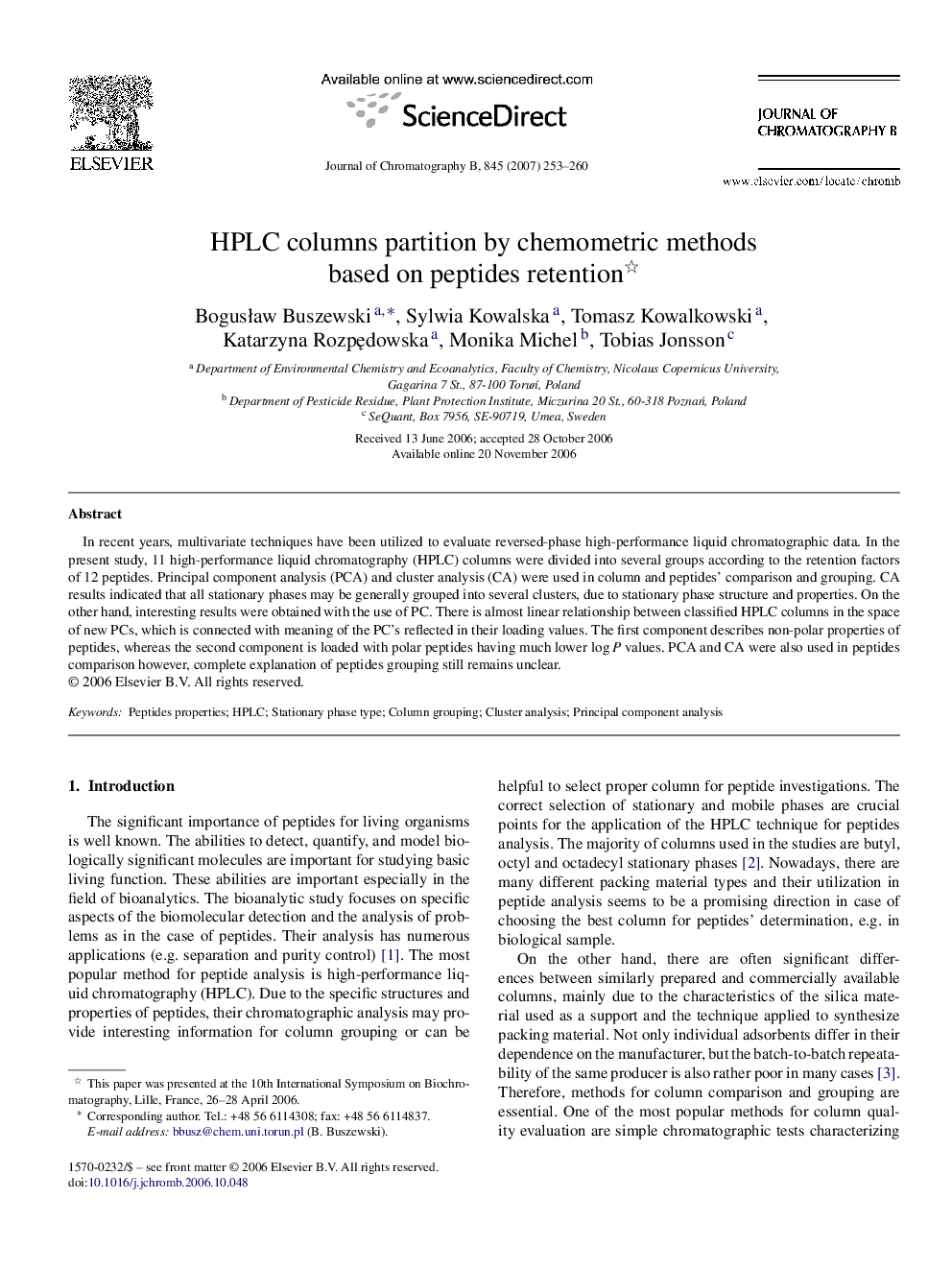| Article ID | Journal | Published Year | Pages | File Type |
|---|---|---|---|---|
| 1217233 | Journal of Chromatography B | 2007 | 8 Pages |
In recent years, multivariate techniques have been utilized to evaluate reversed-phase high-performance liquid chromatographic data. In the present study, 11 high-performance liquid chromatography (HPLC) columns were divided into several groups according to the retention factors of 12 peptides. Principal component analysis (PCA) and cluster analysis (CA) were used in column and peptides’ comparison and grouping. CA results indicated that all stationary phases may be generally grouped into several clusters, due to stationary phase structure and properties. On the other hand, interesting results were obtained with the use of PC. There is almost linear relationship between classified HPLC columns in the space of new PCs, which is connected with meaning of the PC's reflected in their loading values. The first component describes non-polar properties of peptides, whereas the second component is loaded with polar peptides having much lower log P values. PCA and CA were also used in peptides comparison however, complete explanation of peptides grouping still remains unclear.
